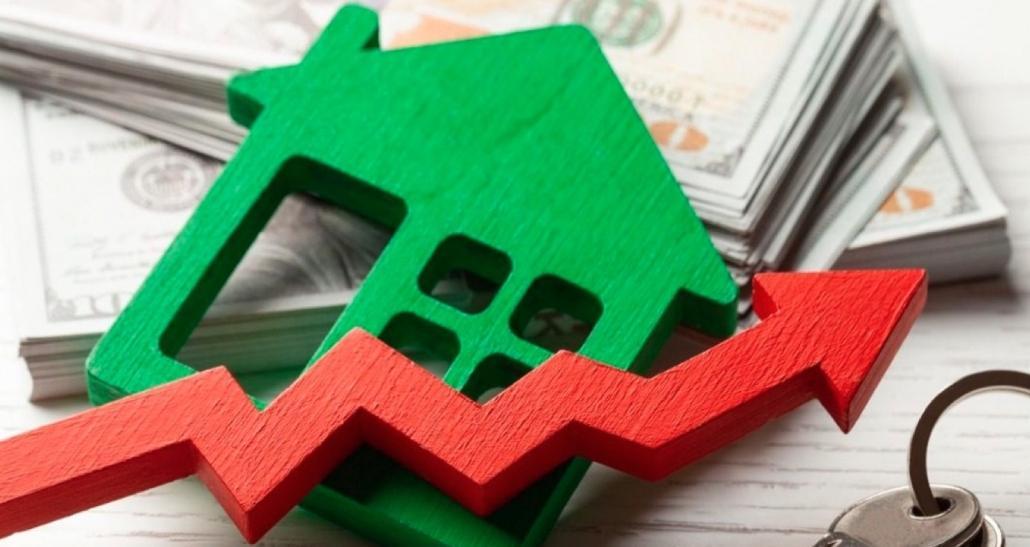Home-Price Surge Reflects Nationwide Housing Competition

The U.S. housing market is experiencing a historic boom as heated competition for a declining supply of homes continues to raise price tags at a record pace.
“In many areas of the country, there are half as many available homes for sale than a year ago—and in some markets, that number increases to less than one-third,” said Danielle Hale, realtor.com® chief economist in a recently released report.
The report showed that buyers have more than 50% fewer homes to choose from amid rising interest rates and prices rising faster than they have in more than a decade.
“For a buyer, that means if they had 10 homes in their price range to choose from last year, they have less than five, perhaps as few as three, available to them today,” Hale continued. “As a result, home prices have skyrocketed, shattering previous records.”
Since the start of 2021, home prices have been on the rise, based on January data from the most recent S&P CoreLogic/Case-Shiller Indices. The trend hasn’t let up, according to the report from realtor.com®, which showed that the median national home listing price grew to $370,000 in March, up 15.6% over last year and a new all-time high.
There is an assortment of factors contributing to price surges, but experts and agents nationwide have spotlighted inventory shortages as the root cause.
“It’s all about supply, and consequently due to the lack of supply, home prices are in no danger of declining,” says Lawrence Yun, chief economist for the National Association of REALTORS®.
According to agents, supply shortages continue to be a burden nationwide, but in some markets, it appears to be driving buyers out.
“We’ve never seen inventory this low in 20 years, yet we have 2 million more people here today than we had 20 years ago,” says Jennifer Wehner, CEO of The Wehner Group and an agent who services clients in the coveted Phoenix housing market.
The market saw a 17.8% increase in median house price in March, along with a 25.5% decrease in new listings from the same period the year prior.
Wehner says she has seen a dip in demand in recent weeks amid bidding wars and intense competition discouraging some buyers as prices surge—particularly first-time buyers. Despite the decrease, the affordability in the Phoenix market continues to attract buyers from across the country.
“In 2006, [affordability] was like 26% before prices went down. That only meant that a bit over 20% of the population could afford a median-priced home, which, at the time, was about $360,000,” she says, noting that the market’s affordability rate sits at 61% now despite the surge.
The same could be said for other coveted markets like Denver, Colorado. While the Denver market saw less than a 1% decrease in home prices in March, the Mile High City experienced a 10% YoY increase at the start of 2021.
“It is just unbelievably competitive,” says Tim Aberle, real estate advisor at Denver-based Thrive Real Estate, adding that demand remains white-hot for single-family homes, which have been reflected in the closing prices.
“A half-a-million-dollar house is now $600,000, and the competitive nature that we have is just beyond precedent,” Aberle continues. “I’ve seen scenarios where a well-priced house has seven to 10 offers on it normally.”
According to Aberle, the number of offers on homes only rises depending on the asking price and the area. He says he has heard of homes getting nearly 40 offers in two days of the property being listed.
That’s been the case in the Northeast, which saw the most significant YoY surge in median home price last month—up 14%—according to reports.
“Everything gets listed on a Wednesday for the weekend’s open houses and, basically, they are going to be under contract by Monday or Tuesday,” says Zack Harwood, an agent at Berkshire Hathaway HomeServices Warren Residential in Boston.
“I put in an offer for someone this week, and this weekend they got eight offers, and the one they accepted was like $100,000 over asking price, with no inspections and no blowback from the sellers on appraisals.”
Overall, Boston’s market saw a 10.3% YoY increase in median listing price in March and a 2.8% decline in homes for sale YoY, according to reports.
As prices continue to climb amid a consistent decline in homes, some may question how long this boom will last and whether the bubble will burst as it did in 2005.
Thus far, experts and agents agree that a market crash is unlikely in the current conditions, but Yun notes that there is still a “worst-case scenario.”
“What I would not like to see is somehow supply keeps getting constrained, and if the supply cannot be boosted, it just means the home prices will continue to fly high, and that will lead to a divided society,” he says. “One could look at the San Francisco market. Essentially, homeowners in San Francisco are very wealthy, while the renters in San Francisco simply cannot buy.”
As it stands, Yun predicts that mortgage rates, which are still really low, will rise toward the end of the year amid inflation and accompanying job growth. To tame prices and balance out the market, Yun says housing supply would need to increase.
That additional supply will have to come from new construction, which has been stunted for a little more than a year due to sky-high lumber prices.
“It’s clear that builders want to build more, but it’s just that they are running into challenges of lumber prices and material costs and some of the zoning and regulations,” Yun says. “The desire is there, which means sooner or later they will find a way to bring more supply, and some more supply will tame the price growth.”
Jordan Grice is RISMedia’s associate content editor. Email him your real estate news ideas to jgrice@rismedia.com.
